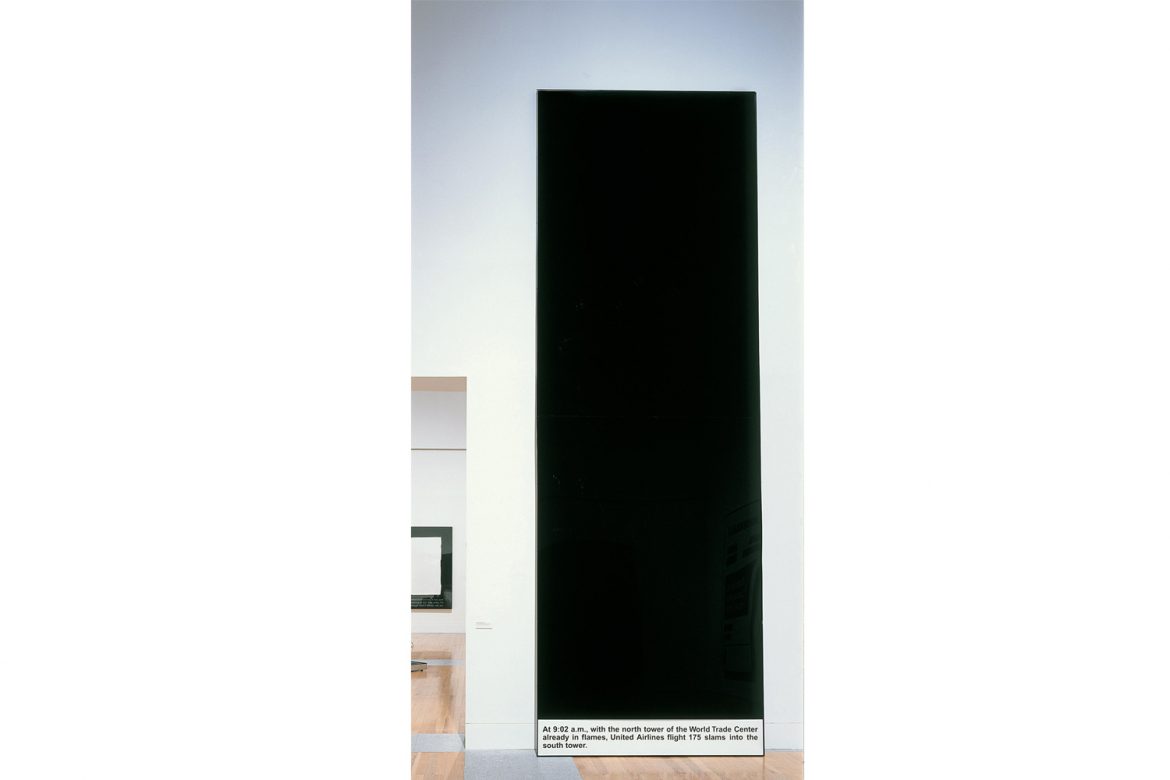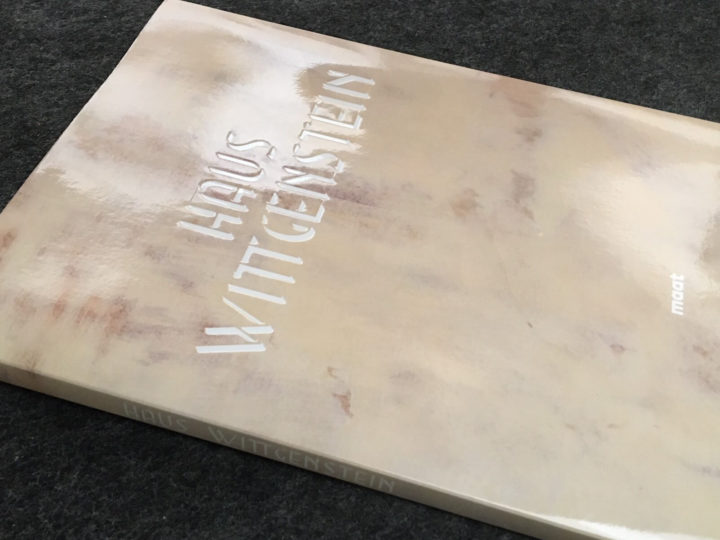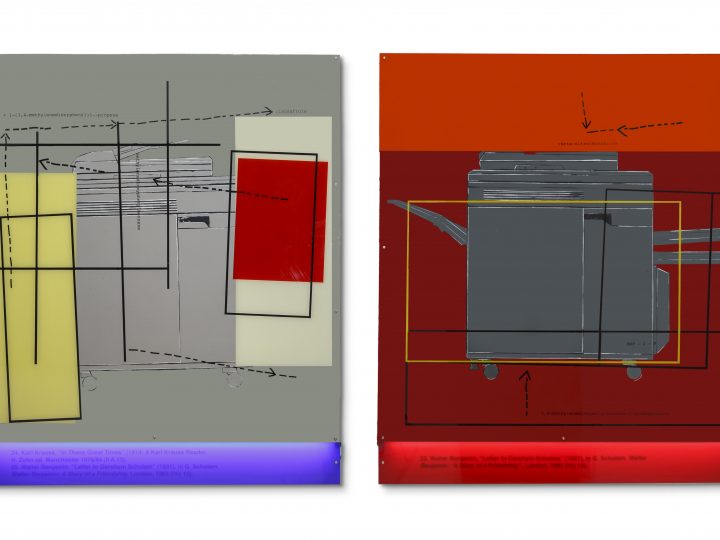
Captions are added. Then a frame with glass isolates painting #66 from the world and creates a black, almost imperceptible mirror. #66 is similar to the technologies of war and those of terror (Paul Virilio, The Vision Machine). João Louro could almost be writing through a badly quoted and incomplete Ad Reinhardt, not Picasso. ‘My work represents the triumph of the forces of darkness […] over the power of light’. There is no desire or space for the emergence of the phantasmal, so what afflicts us and reduces us to silence before this sphinx-form?
Starting from #66, the significant abyss is accentuated. In the economy of terror following 11 September, the book La procédur du silence by Paul Virilio (2000) was translated into to English by Continuum: New York and Londod, under the title Art and Fear (2003). The schizophrenic moral of capitalism is accumulation; Reinhardt’s reduction and Minimalism cannot but terrorise with their etic of gain: ‘less is more’. João Louro gives the monochrome new meaning with #66 on the opposite side to the profitability promoted by the industry of fear. And this is a screen breaking down and an uncertain writing. Louro subverts Ad Reinhardt’s Twelve rules for a new academy (1957)3. The glass of the frame on the black picture # 66 swallows the world like a mirror. The caption, taken from Time (‘Time goes to War’) is inscribed under the Tower-picture: ‘At 9:02 am., with the north tower of the World Trade Center already in flames, United Airlines flight 175 slams into the south tower’. For the mediated observer, there is no time dimension: between the sensational event an the stultifying ‘information bomb’ (Paul Virilio). It was 9:02. This is light. Between the Freudian instincts to dominate (Bemachtigungstrieb) and the destructive ones (Destruktionstrib), there is no past4 nor future5. #66 is the entropic crux between the expected and collapse6.
Paulo Herkenhoff
Rio de Janeiro, 5 Abril 2005.
1 These are references to Rosalind Krauss and David Michel Levin respectively.
2 Dead End is a work by João Louro. Here he places the observer a long way from Sade, Benjamim, Wittgenstein, Beckett or Battaille, according to the road signs with their names.
3 The black field of #66, after having been like an extreme picture of Reinhardt, has no texture, forms, design, colours, light, space, time. Size or scale, movement, no object, no subject, no matter, no symbols, images, or signs.There is not even any scale. Neither pleasure nor pain. No mindless working or non-working.
4 Nadine Robinson’s installation Tower Hollers (2002) puts music and works in relation. During her studies at the World Trade Center’s World Views she portrayed the Towers as a representation of the world economy. Robinson dealt with the work conditions of the poor Afro-American, Latin and European immigrants who at the time (1999) worked for 455 companies/lessors of th WTC. Tower Hollers associates Muzak, aimed the contemporary productivity, with the old work songs sung by condemned blacks in the prison fields of Texas.
5 In the installation Nocturne (tulipa obscura) (2002), Iñigo Maglano-Ovalle uses complex optical devices, such as military night vision lenses to introduce a reference to Milton’s Paradise Lost and give visibility to that which is hidden from sight in the games of power, examining our Knowledge of the facts in the opaque, greenish blend of news on the war in Afghanistan.
6 Blind Image #66 (2004) by João Louro is located in the field of history. At the moment qhen Krronos devours his children, it lies, therefore, between Tower Hollers (2002) by Nadine Robinson and Nocturne (tulipa obscura) by Iñigo Maglano_ovalle.

![NI LE SOLEIL NI LA MORT [solo show]](https://joaolouro.com/wp-content/uploads/2021/10/conversa-pavilhao-branco-720x540.jpg)

